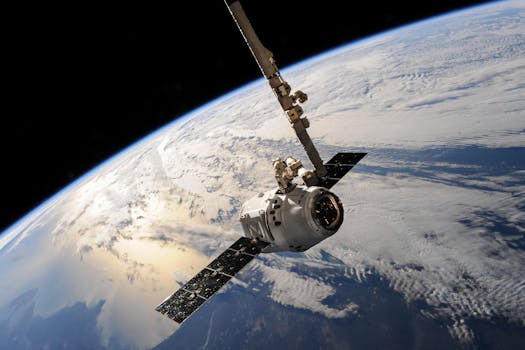The Future of Satellites: Revolutionizing Global Connectivity
The future of satellites is poised to revolutionize global connectivity, enabling faster and more reliable communication networks. With advancements in space technology, satellites are becoming increasingly important for a wide range of applications, from navigation and communication to weather forecasting and Earth observation.

The Future of Satellites: Revolutionizing Global Connectivity
The future of satellites is poised to revolutionize global connectivity, enabling faster and more reliable communication networks. With advancements in space technology, satellites are becoming increasingly important for a wide range of applications, from navigation and communication to weather forecasting and Earth observation. In this article, we will explore the future of satellites and their potential to transform the way we live and work.
Introduction to Satellites
Satellites have been in use for several decades, providing a wide range of services, including television broadcasting, telecommunications, and navigation. However, the future of satellites is expected to be even more exciting, with the development of new technologies and applications. One of the key trends in the satellite industry is the increasing use of small satellites, also known as CubeSats. These small satellites are smaller, cheaper, and more efficient than traditional satellites, making them ideal for a wide range of applications, including Earth observation, communication, and navigation.
Advancements in Space Technology
Advances in space technology are driving the growth of the satellite industry. One of the key areas of advancement is in the development of new propulsion systems, such as electric propulsion and advanced ion engines. These new propulsion systems are more efficient and powerful than traditional propulsion systems, enabling satellites to travel farther and faster. Another area of advancement is in the development of new materials and manufacturing techniques, such as 3D printing. These new materials and manufacturing techniques are enabling the creation of lighter, stronger, and more efficient satellites.
Applications of Satellites
Satellites have a wide range of applications, from navigation and communication to weather forecasting and Earth observation. One of the key applications of satellites is in the provision of navigation services, such as GPS. Satellites are also used for communication, providing services such as television broadcasting and telecommunications. In addition, satellites are used for weather forecasting, providing critical data and imagery for predicting weather patterns and storms. Satellites are also used for Earth observation, providing critical data and imagery for monitoring the environment and tracking changes in the climate.
Conclusion
In conclusion, the future of satellites is poised to revolutionize global connectivity, enabling faster and more reliable communication networks. With advancements in space technology, satellites are becoming increasingly important for a wide range of applications, from navigation and communication to weather forecasting and Earth observation. As the satellite industry continues to evolve, we can expect to see new and innovative applications of satellites, transforming the way we live and work.




